Heroes of the Solomons: The Coastwatchers
The role played by Australian Coastwatchers and their Melanesian scouts during the Pacific War

“The Coastwatchers saved Guadalcanal, and Guadalcanal saved the Pacific.”
- Admiral William F. Halsey USN
Words: Roderick Eime
When the conversation turns to Australia's actions in WWII’s Pacific Theatre, it invariably starts with tales of the Kokoda Track and how our brave and underresourced lads turned back a Japanese invasion. Well, all that is true of course, but it’s part of a much bigger picture.
While many military history authors fixate on Kokoda, Michael Veitch has made it his mission to shine a light on the many other actions and personalities who, for one reason or another, have been overlooked in our recounting of the campaign that occupied much of 1942.
One such motley group of highly effective espionage agents was actually comprised of mainly civilians who happened to be in the right place when the urgent need arose.
“The Coastwatcher organisation of World War II has been rightly described by their wartime leader, Commander Erik Feldt, as ‘one of the most successful spy rings of all time’, said Veitch, “achieving real battlefield results far in excess of their minuscule numbers.”
The need for these improvised coastal sentries came about after WWI when it was realised that our northern borders were almost completely undefended. At the outbreak of hostilities in 1914, German colonialists and their small militia detachments roamed and sailed unchallenged all across our porous frontier.
Commander Eric Feldt, the Queensland-born son of Swedish immigrants who had joined the Royal Navy (RN) in 1917, worked in Papua New Guinea in the 1930s and reenlisted when war broke out in 1939. With his regional experience and sharp military mind, he was given the task of forming a network of lookouts across PNG, Bougainville and the Solomons whose job it was to report on ship and aircraft movements in their vicinity.
Also critical to the success of the coastwatcher operation was the cooperation of the local native people. It was important, Feldt noted, that locals must be treated fairly and paid properly in order to gain their trust. Without the aid of villagers, the operation would fail.
Feldt drew on his contacts among missionaries, traders, administrators and plantation owners, supplied them with radios and hoped for the best. When the Japanese forces arrived on their doorstep any coastwatchers captured would receive little mercy and almost 40 fell into enemy hands. Of those, none survived the brutal interrogation that ensued.

But if the worth of Feldt’s secret men and women ever needed to be validated, one event stands out that changed the course of the war in the Pacific.
Initially, they had performed small, but heroic acts such as helping the few surviving stragglers from Rabaul escape their Japanese pursuers in January 1942. They also helped coordinate the evacuation by submarine of Europeans destined to be hunted and slaughtered by the enraged Japanese.
But it was in August 1942 as 19,000 US Marines and their supply ships were unloading on the beaches of Guadalcanal that a simple but vitally important radio message was relayed to the vulnerable invasion fleet.
Paul Mason was a short, half-deaf and malaria-impaired 40-year-old former plantation manager who was almost passed over for the mission. But Mason and his 2IC, Jack Read, bravely remained on Bougainville operating from behind enemy lines, providing vital weather reports. Then, on August 7, a telltale V-formation of Japanese dive bombers flew overhead on a course for Guadalcanal. Mason immediately radioed his now famous message: "Twenty-four bombers headed yours". These critical five words were relayed via Port Moresby, Townsville and Canberra to the US fleet anchored off Guadalcanal, giving them a vital 90 minutes to prepare for the attack.
Thanks to Mason’s message, the supply ships were withdrawn to safety and a flight of US Navy Wildcat fighters sent up to intercept the incoming attackers. Thinking they had the jump on the Americans, the Japanese bombers were instead taken completely by surprise and cut to shreds allowing the Marines to consolidate their beachhead.
The vicious fighting on Guadalcanal would rage until February 1943 when the last of the Japanese survivors were evacuated. From that moment on, the Allied forces were on the offensive, culminating in the unconditional surrender of Japan in September 1945.

"They watched and warned and died that we might live."

Sir Jacob Charles Vouza MBE, GM
Equally as famous and perhaps more so, is the courageous Jacob Vouza who was captured by the Japanese while on a dangerous patrol and beaten and tortured to near death.
Vouza survived the war, passing away in 1984 at the age of 84. For his exemplary bravery, he was presented with the Silver Star and Legion of Merit. In 1979, he was knighted by Queen Elizabeth II. In addition, he was awarded Great Britain’s George Medal and a scholarship fund was set up in his name to assist underprivileged Solomon Island children in attaining a better education.
Refusing to give any information to his captors, he was left for dead. When Vouza regained consciousness, he freed himself and crawled four miles back to Allied lines in order to deliver vital intelligence. When met by Martin Clemens, the Australian said he could “barely look at him” because of the severity of his wounds.
Source: www.battleforaustralia.org
Heroes of the Solomons: Lofton R. Henderson
Every time you land at Honiara’s Henderson Field, you are arriving at a place in history.
In August 1942, US Marines landed in force to capture the almost complete airfield that the Japanese had been constructing since early July, setting off the six month Guadalcanal Campaign that continued until February 1943.
Soon after the capture of the airfield at Lunga Point, it was renamed Henderson Field and began operations as an airbase to attack the Japanese forces that were still in strength on the island of Guadalcanal as well as the naval and supply vessels in the surrounding waters.
The naming of the airfield was in honour of Major Lofton Russell Henderson who was already a seasoned naval aviator at the outset of war having been appointed as Second Lieutenant in the United States Marine Corps in 1926. His career as an aviator began in 1928 when he was “detailed to duty involving flying as a Student Naval Aviator” in California.
Henderson’s military career did not begin auspiciously, but by perseverance of character and more than a little charm, he endeared himself to both classmates and superiors as well as developing a reputation as a heartthrob and the nickname “Joe Schmaltz”
“In the course of his extensive experiments to determine the least possible seconds that could be spent in dressing and reaching formation on time, Joe hung up the record of thirteen ‘Lates To Formation in one week,” recorded his 1926 yearbook biography. “But, all joking aside, despite the fact that he’ll keep you waiting three minutes for every two that you spend in his company, still he does make a good roommate.”
After postings at overseas bases prior to 1941, Henderson was moved to Midway Island in April 1942 and relieved Captain Leo Smith, the commander of VMSB-241 bombing squadron and immediately set about training his pilots and crews for the hazardous task of dive-bombing ships.
Henderson began this task with obsolete aircraft. His Vought SB2U Vindicators were the first monoplanes developed to be a carrier-based dive bomber for the United States Navy in the 1930s and still had fabric wing coverings that were not faring well in the tropical conditions. To allow for the aircraft’s inadequacies and poor state of repair, Henderson developed a tactic of ‘glide bombing’ where the aircraft would approach the target faster, at a much shallower angle and releasing bombs at a lower altitude.
He noted: “Practice is to dive with wheels up instead of down, as has been practised heretofore. Diving wheels up gives much-improved control due to lessened stick forces, and shortens the required arc of pull out, but builds up speeds in excess of 300 knots which has proved to be too great a strain for our tattered, battered ships. “
Fortunately, some of the brand new and much tougher Douglas SBD Dauntless aircraft arrived in time for their big test in June of that year: the Battle of Midway, just six months after the Japanese attack on Pearl Harbor.
In the opening phase of the intense battle around the mid-Pacific atoll, Henderson’s plan of ‘glide bombing’ was put to the test on June 4, 1942, when he led his flight of dive bombers into action against the Japanese carrier Hiryu. As his flight began their shallow 30-degree dive, defending Japanese planes identified Henderson’s bomber as the command aircraft and began working their way down the line of closely-formed, slow-moving bombers.
A report from one of the few surviving aircraft stated:
“The first enemy fighter attacks were directed at the squadron leader in an attempt to put him down. After about two passes, one of the enemy put several shots through his plane and the left wing began to burn. It was apparent that he was hit and out of action.”
Even though one parachute was seen to come from Henderson’s plane, neither he nor his gunner, PFC Reninger, were found. The two become the first crew to be lost in the battle that would go down in history as "the most stunning and decisive blow in the history of naval warfare."
Henderson, aged 39, was awarded a posthumous Navy Cross for his actions and apart from naming of the new airfield on Guadalcanal, a US Navy destroyer was named in his honour in 1945.
His Navy Cross citation reads:
The President of the United States of America takes pride in presenting the Navy Cross (Posthumously) to Major Lofton Russell Henderson (MCSN: 0-4084), United States Marine Corps, for extraordinary heroism and distinguished service in the line of his profession while serving as Squadron Commander and a Pilot in Marine Scout-Bombing Squadron TWO HUNDRED FORTY-ONE (VMSB-241), Marine Air Group TWENTY-TWO (MAG-22), Naval Air Station, Midway, during operations of the U.S. Naval and Marine Forces against the invading Japanese Fleet during the Battle of Midway on 4 June 1942. With utter disregard for his own personal safety, Major Henderson, with keen judgment and courageous aggressiveness in the face of strong enemy fighter opposition, led his squadron in an attack which contributed materially to the defeat of the enemy. He was subsequently reported as missing in action. It is believed he gallantly gave up his life in the service of his country.
A Real Black Sheep: Major Gregory “Pappy” Boyington

From the series: Heroes of the Solomons
If ever there was a larger-than-life, comic book-worthy action hero, it was US Marine Corps fighter ace, ‘Pappy’ Boyington, writes Roderick Eime
Boyington was born in Idaho on 4 December 1912 and took his first flight at the tender age of six. Not with some rogue barnstormer, mind you, but with Clyde Pangborn, a man who would later perform numerous daring feats including a trans-Pacific flight in 1931.
Clearly impressed with this experience and naturally drawn to military service, Boyington was an aviation cadet with the Marine Corps Reserve at the age of 23. By 28 he was a first lieutenant instructing at Pensacola, Florida.
A noted wrestler at college, he soon became known as a hard-drinking but likeable roughneck always sailing close to the edge of trouble. He had a certain charm, especially with the ladies, and a knack for upsetting his superior officers.
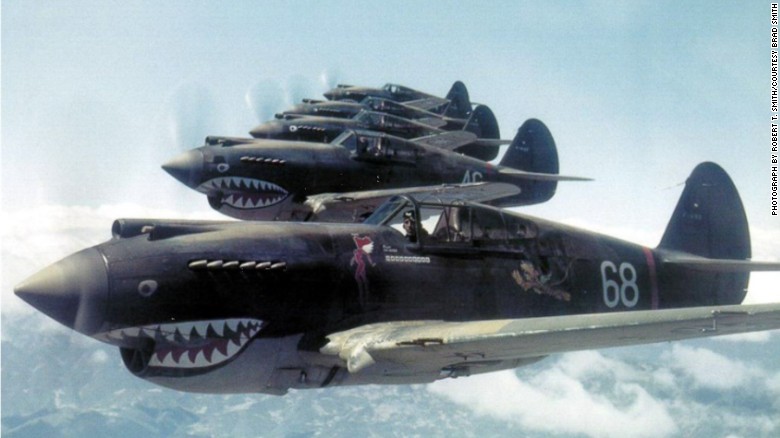
Looking for an escape as much as an opportunity, Boyington signed on with the famous volunteer air force, the ‘Flying Tigers’, and was soon in the air flying missions in P-40s over Burma under the command of "Colonel" Claire Lee Chennault. Many will remember John Wayne playing Capt. Jim Gordon in the famous, Oscar-nominated 1942 movie about the covert American operation. But Boyington, despite a (disputed) tally of six Japanese kills, was up to his usual antics and fell foul of Chennault who threw him out of the Flying Tigers. The two would never reconcile.
Even with such a chequered record, the US Marine Corps needed combat-ready fighter pilots and by early 1943, Boyington was on Guadalcanal as Executive Officer (XO) of Marine Fighter Squadron 122. It wasn’t until September that Boyington put together a team of hand-picked, unassigned pilots and reformed Marine Fighter Squadron 214. The first suggested name of ‘Boyington’s Bastards’ was dismissed by the USMC’s PR and instead became known as ‘The Black Sheep Squadron’.

Astride the potent F4U Corsairs with their new black bar insignia and pre-ordained reputation, VMF-214 set about tearing up the Japanese invaders, which they did with great aplomb. In less than three months, the renegade unit destroyed or damaged over 200 Japanese planes, half of them in air-to-air combat, as well as sinking ships and bombing shore installations. A Presidential Unit Citation was quickly bestowed on them for extraordinary heroism in battle and they became a minor sensation, grabbing headlines back home in the US. They even bet major league baseball players they could down a Zero for every cap they were sent.
After this first triumphant tour of duty in which Boyington had amassed over a dozen kills, the 26 pilots left their base at Munda and headed for Sydney and the once famous Australia Hotel for a period of serious R&R. The ornate and prestigious hotel opened in 1891 and once stood where the massive MLC Centre now stands in Martin Place.
Doubtlessly hung over, they returned to the Solomons for a second tour but just five days before it too was over, Boyington was ambushed by overwhelming numbers of Japanese fighters near Rabaul and shot down. He recalls this moment in his autobiography, ‘Baa Baa Black Sheep’.

"I threw everything in the cockpit all the way forward - this means full speed ahead - and nosed my plane over to pick up extra speed until I was forced by water to level off. I had gone practically a half a mile at a speed of about four hundred knots when all of a sudden my main gas tank went up in flames in front of my very eyes. The sensation was much the same as opening the door of a furnace and sticking one's head into the thing."
With his aircraft hopelessly damaged and he himself wounded by the explosion, Boyington baled out. Despite efforts by his men to locate him, he was plucked from the sea by a Japanese submarine and packed off as a POW through a series of camps, ending up in Yokohama at war’s end.
‘Pappy’ Boyington was repatriated after the war and received the Medal of Honor and the Navy Cross in his new rank as a colonel, but it wasn’t long until he was creating mayhem again, bouncing from job to job and drinking too much. Also a heavy smoker, his run of good fortune expired on January 11, 1988. Gregory Boyington, fighter ace and flawed American hero was dead at the age of 75.
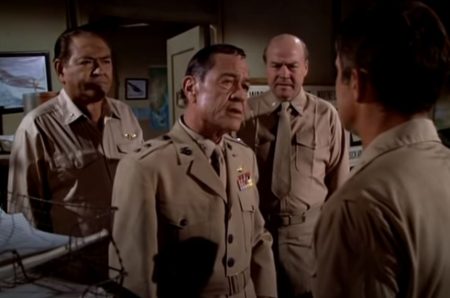
His autobiography, written in 1958, attracted the attention of NBC television producers and a series of the same name was aired between 1976 and 1978 with Boyington played by co-director Robert Conrad. The series was set on a fictional island called Vella la Cava, which obviously referred to their one time base at Vella Lavella (Barakoma) where traces of the airfield can still be seen.
Apart from Barakoma airfield on Vella Lavella, VMF-214 under Boyington was also based at Banika Island in the Russell Islands Group, Henderson and Munda before moving to their final location on Bougainville.
====
For visits and WWII tours of Munda, contact Agnes Lodge
Agnes Lodge Ltd
www.agneslodge.com.sb
Munda
Solomon Islands
Phone: (677) 62133
Fax: (677) 62190
E-mail: mundamagic@agneslodge.com.sb
The story was originally published in Solomons Airlines Magazine
https://issuu.com/rodeime/docs/36-47_solomons_issue_67
Bob Gurney, the hero of Alotau
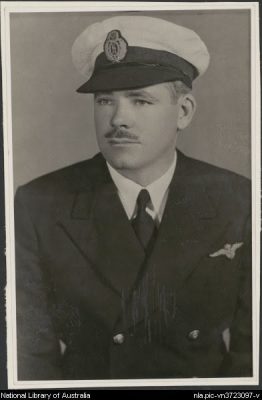
We remember a pioneering Australian aviator who was crucial to the development of air operations in Papua New Guinea. Roderick Eime recalls the exploits of Charles 'Bob' Gurney.
Marshall Islands: Death of a Prince
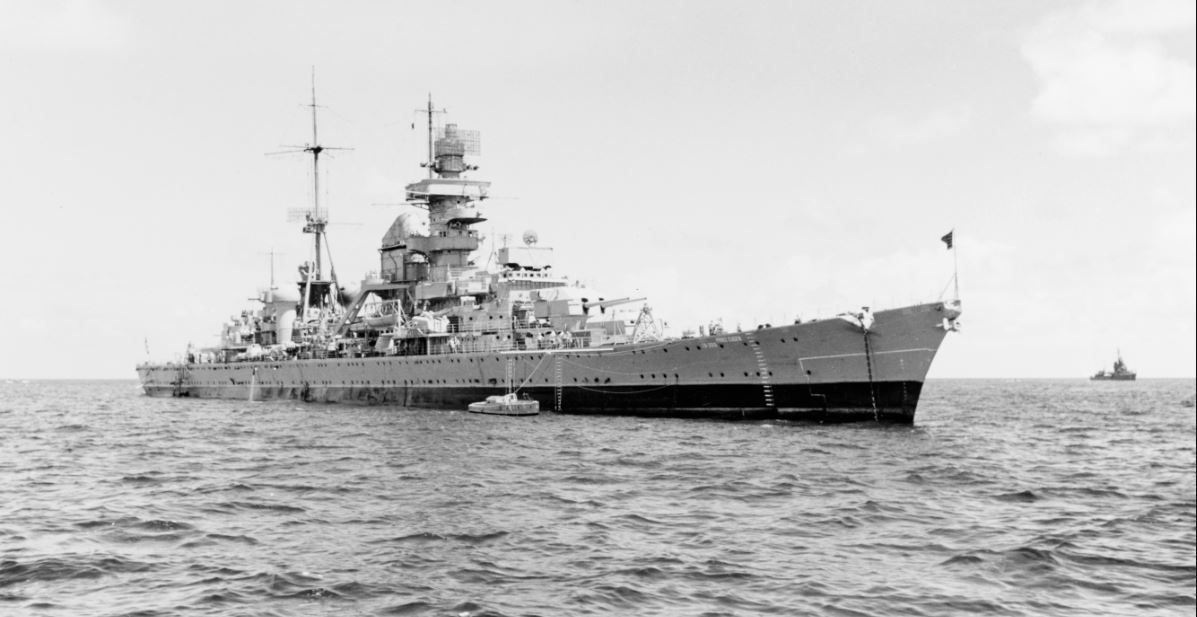
The namesake of one of Europe’s most famous military commanders lies upside down in a lagoon at Kwajalein Atoll in the Marshall Islands. Roderick Eime recalls the extraordinary life and death of this famous warship.
Lieutenant Colonel Harold Bauer: The Legend of ‘Indian Joe’
Vanuatu's Bauer Field in Vila was named after a charismatic hero, Medal of Honor recipient and US Marine Corps fighter ace. Roderick Eime remembers the man.
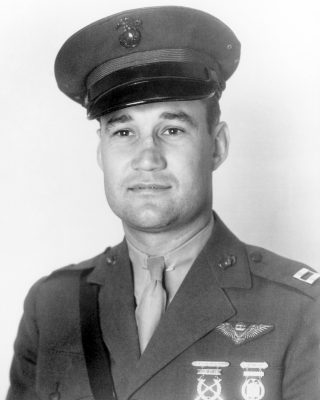
It’s easy to forget the ferocious battles that took place across the Pacific region from 1942 to 1945. Every nation in the region was embroiled in a fight to the death, caught between the giant protagonists, the USA and Japan.
Escape from PNG: The Bulldog Track
Longer, higher, steeper, wetter, colder and rougher than Kokoda

How a bunch of fugitive old miners and tradesmen discovered a vital supply route and survived one of WWII great escapes.
Roderick Eime learns about The Bulldog Track from the book by actor, Peter Phelps.
The legend of the Kokoda Track has long since entered the annals of Australian folklore. The decisive and protracted battle marked a turning point in the war against the invading Japanese but, despite its unarguable importance, the Kokoda Campaign runs the danger of overshadowing many other significant battles and exploits.
Sattelberg: A VC for Australia’s toughest soldier
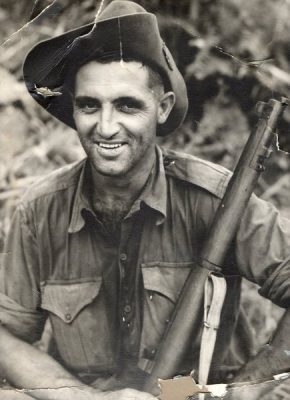
One of Australia’s true war heroes was a poet and butterfly collector.
The annals of Australian military history are chock full of tales of heroism and derring-do and every so often a new hero arises from these vast volumes. Words: Roderick Eime
Thomas Currie ‘Diver’ Derrick was one such soldier who rose to ‘rock star’ status among the Australian Imperial Force (AIF) in WWII but has since faded from our memories.
Did an Australian adventurer and spy forewarn of the attack on Pearl Harbor?
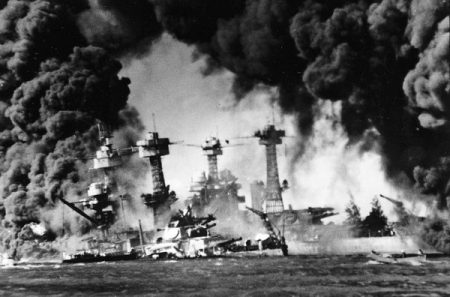
Battleship USS West Virginia sunk and burning at Pearl Harbor on Dec. 7, 1941. In background is the battleship USS Tennessee.
by Roderick Eime
The story begins aboard the 1929 round-the-world flight of the German airship, LZ-127 Graf Zeppelin.
A truly international contingent of media and privileged guests are enjoying the lavish facilities of Germany’s luxury airship as they complete their ground-breaking three week journey around the planet.
Amelia Earhart Mystery: the theory that just won’t go away
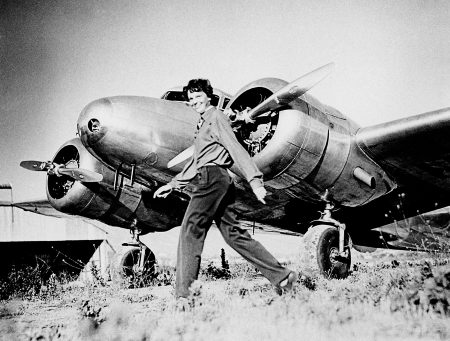
Amelia Earhart, who served as a consultant in the Department of the Study of Careers for Women at Purdue from 1935 to 1937, strides past her Lockheed Electra. Purdue Libraries' Earhart collection. (File photo)
The Amelia Earhart mystery has gripped the imagination for almost 80 years and despite numerous searches and millions of dollars, no conclusive evidence has yet been found.
Many theories have been put forward over the years and just as many discounted, but one just keeps coming back. The idea that Earhart was forced down and captured by the Japanese in the Marshall Islands is as unpalatable as it is incredulous. But one researcher, Mike Campbell, makes a compelling case for this proposition.